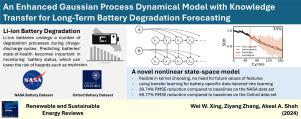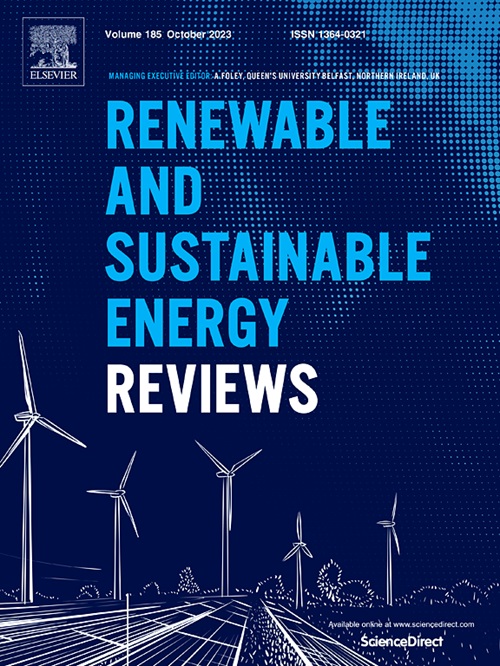用于电池健康状态预测的增强型高斯过程动态建模
IF 16.3
1区 工程技术
Q1 ENERGY & FUELS
引用次数: 0
摘要
监测锂离子电池的健康状况是电动汽车电池管理系统的重要组成部分。在过去十年中,大量基于特征的机器学习方法被引入,以提高健康状况和寿命终止预测的准确性,尤其是在电池组寿命的早期。然而,除非使用多个电池数据集来直接粗略预测寿命终止时间,否则这种方法是不可行的,因为不知道未来周期的特征。本研究引入了一种新的非线性状态空间模型,可以克服这一限制。通过泛化协方差结构,扩展了功能强大的高斯过程动态模型,从而为观测变量和潜变量提供了更灵活的模型。该模型通过迁移学习得到了进一步增强,从而对锂离子电池未来直至报废的健康状况做出了准确的早期预测。在美国国家航空航天局艾姆斯电池数据集和牛津电池退化数据集上进行的实验表明,新模型的准确性和优越性超过了最先进的基准算法,包括有监督的高斯过程模型、深度卷积网络、递归网络和支持向量回归。NASA 数据集的均方根误差降低了 43%,牛津数据集的均方根误差降低了 54%。本文章由计算机程序翻译,如有差异,请以英文原文为准。

Enhanced Gaussian process dynamical modeling for battery health status forecasting
Monitoring the state-of-health of Li-ion batteries is a critical component of battery management systems in electric vehicles. A large number of feature-based machine-learning methods have been introduced in the last decade to improve the accuracy of predictions of the state-of-health and end-of-life, especially early in the lifetime of the battery stack. Unless multiple battery data sets are used for direct and crude predictions of the end-of-life, however, such an approach is infeasible since the features are not known for future cycles. In this study a new nonlinear state-space model that can overcome this limitation is introduced. The powerful Gaussian process dynamical model is extended by generalizing the covariance structure, and therefore permitting more flexible models for the observables and latent variables. The model is further enhanced with transfer learning, to yield accurate early predictions of the future state-of-health of Li-ion batteries up to end-of-life. Experiments conducted on two of the NASA Ames Battery data sets and the Oxford Battery Degradation data set demonstrate the accuracy and superiority of the new model over state-of-the-art benchmarks algorithms, including supervised Gaussian process models, deep convolutional networks, recurrent networks and support vector regression. The root mean square error is reduced by up to 43% on the NASA data sets and by up to 54% on the Oxford data set.
求助全文
通过发布文献求助,成功后即可免费获取论文全文。
去求助
来源期刊

Renewable and Sustainable Energy Reviews
工程技术-能源与燃料
CiteScore
31.20
自引率
5.70%
发文量
1055
审稿时长
62 days
期刊介绍:
The mission of Renewable and Sustainable Energy Reviews is to disseminate the most compelling and pertinent critical insights in renewable and sustainable energy, fostering collaboration among the research community, private sector, and policy and decision makers. The journal aims to exchange challenges, solutions, innovative concepts, and technologies, contributing to sustainable development, the transition to a low-carbon future, and the attainment of emissions targets outlined by the United Nations Framework Convention on Climate Change.
Renewable and Sustainable Energy Reviews publishes a diverse range of content, including review papers, original research, case studies, and analyses of new technologies, all featuring a substantial review component such as critique, comparison, or analysis. Introducing a distinctive paper type, Expert Insights, the journal presents commissioned mini-reviews authored by field leaders, addressing topics of significant interest. Case studies undergo consideration only if they showcase the work's applicability to other regions or contribute valuable insights to the broader field of renewable and sustainable energy. Notably, a bibliographic or literature review lacking critical analysis is deemed unsuitable for publication.
 求助内容:
求助内容: 应助结果提醒方式:
应助结果提醒方式:


